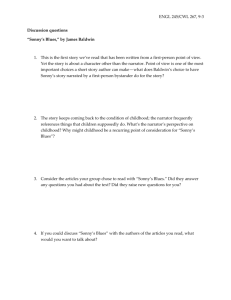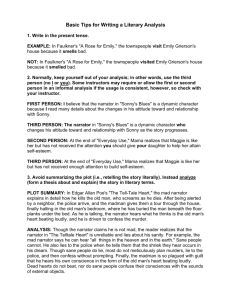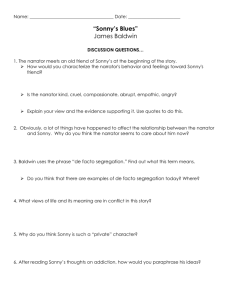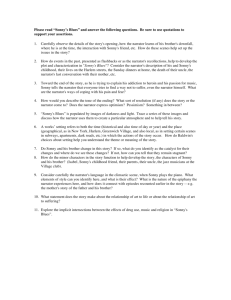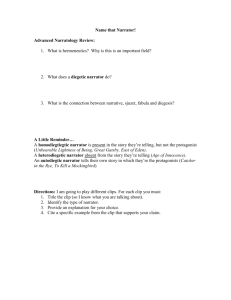Reading Questions 10 - Pelister Literature
advertisement
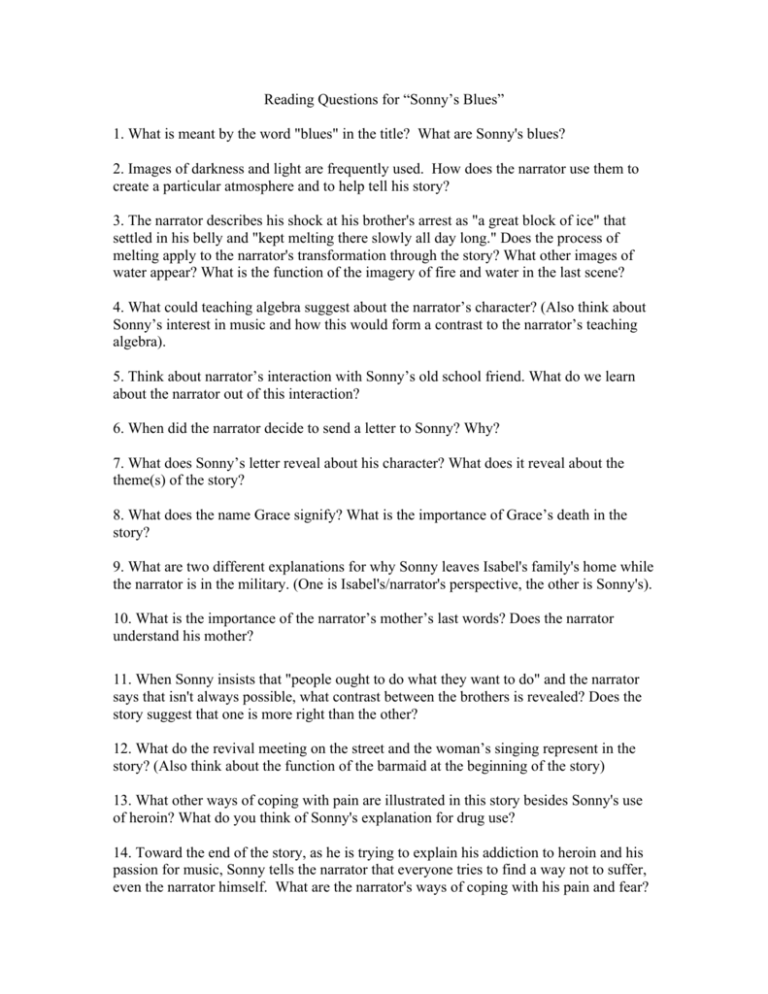
Reading Questions for “Sonny’s Blues” 1. What is meant by the word "blues" in the title? What are Sonny's blues? 2. Images of darkness and light are frequently used. How does the narrator use them to create a particular atmosphere and to help tell his story? 3. The narrator describes his shock at his brother's arrest as "a great block of ice" that settled in his belly and "kept melting there slowly all day long." Does the process of melting apply to the narrator's transformation through the story? What other images of water appear? What is the function of the imagery of fire and water in the last scene? 4. What could teaching algebra suggest about the narrator’s character? (Also think about Sonny’s interest in music and how this would form a contrast to the narrator’s teaching algebra). 5. Think about narrator’s interaction with Sonny’s old school friend. What do we learn about the narrator out of this interaction? 6. When did the narrator decide to send a letter to Sonny? Why? 7. What does Sonny’s letter reveal about his character? What does it reveal about the theme(s) of the story? 8. What does the name Grace signify? What is the importance of Grace’s death in the story? 9. What are two different explanations for why Sonny leaves Isabel's family's home while the narrator is in the military. (One is Isabel's/narrator's perspective, the other is Sonny's). 10. What is the importance of the narrator’s mother’s last words? Does the narrator understand his mother? 11. When Sonny insists that "people ought to do what they want to do" and the narrator says that isn't always possible, what contrast between the brothers is revealed? Does the story suggest that one is more right than the other? 12. What do the revival meeting on the street and the woman’s singing represent in the story? (Also think about the function of the barmaid at the beginning of the story) 13. What other ways of coping with pain are illustrated in this story besides Sonny's use of heroin? What do you think of Sonny's explanation for drug use? 14. Toward the end of the story, as he is trying to explain his addiction to heroin and his passion for music, Sonny tells the narrator that everyone tries to find a way not to suffer, even the narrator himself. What are the narrator's ways of coping with his pain and fear? 15. Isabel's family tolerates Sonny only because he is the narrator's brother, but in the jazz club, the narrator is welcome only because he is Sonny's brother. How do they each react to these situations? Does the narrator want to "belong" in the club? 16. The bass player Creole has an important role in the final scene, as almost a spiritual teacher. How is he a foil or contrast to the narrator? 17. Consider carefully the narrator's language in the climactic scene, when Sonny plays the piano. What elements of style can you identify here, and what is their effect? What is the nature of the epiphany the narrator experiences? 18. What might be some reasons for why the narrator buys Sonny a drink at the end of the story? 19. What is the connection between biblical allusion to the "cup of trembling" in the last line and the glass of Scotch and milk? -Isaiah 51: 17 Awake, awake, stand up, O Jerusalem, which hast drunk at the hand of the LORD the cup of his fury; thou hast drunken the dregs of the cup of trembling, and wrung them out. 22 Thus saith thy Lord the LORD, and thy God that pleadeth the cause of his people, Behold, I have taken out of thine hand the cup of trembling, even the dregs of the cup of my fury; thou shalt no more drink it again: 20. What does the story tell us about black heritage in relation to music?

